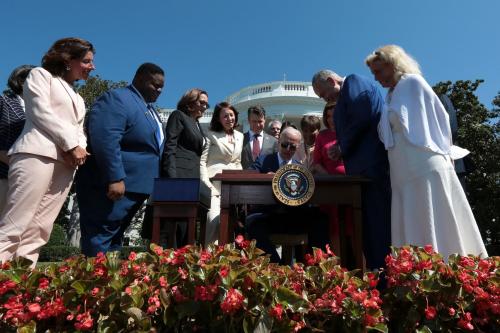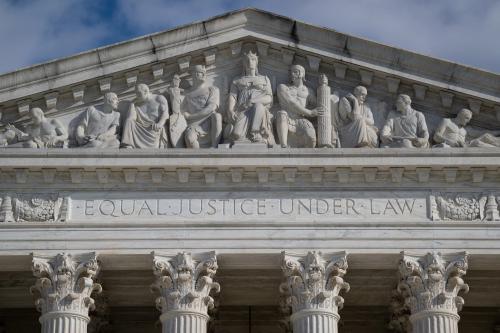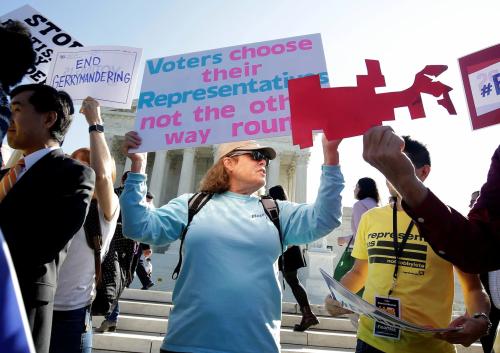As Chicagoans went to the polls on Tuesday, early signs pointed to a narrow victory for Paul Vallas, the former head of the city’s public school system and noted educational reformer, over Brandon Johnson, a former social studies teacher turned organizer for the Chicago Teachers Union. Vallas led in the pre-election polls by an average of 3 percentage points, a margin that widened to 6 points when undecided voters were asked whether they leaned toward a candidate. A higher share of Vallas’s supporters said that they were certain to cast their ballots, and more of Johnson’s said that they might change their minds about their choice. Vallas enjoyed a strong lead among voters 60 and older, who are the most likely to vote of all age cohorts, while Johnson was doing best among those 30 and younger, who are typically the least likely to participate.
The ideological battle lines were clearly drawn. Vallas ran as a moderate, Johnson as an unabashed progressive. Johnson wanted to raise taxes on businesses, visitors of Chicago, and wealthy individuals to fund new social programs, while Vallas advocated fiscal restraint. The centerpiece of Vallas’s campaign was a pledge to crack down on violent crime. By contrast, Johnson expressed early sympathy (some would say support) for the “defund the police” movement that erupted after the murder of George Floyd before moderating his position. Not surprisingly, Vallas enjoyed the fervent backing of Chicago’s police union.
When incumbent mayor Rahm Emanuel ran for reelection in 2015, he also faced a progressive candidate, Jesus “Chuy” Garcia, leading some observers to draw parallels between then and now. But these elections differ in two key respects. First: because there was no Black candidate in the 2015 race, the Black vote was up for grabs, and Emanuel won it by a margin of 58 to 42. He also won the white vote by 2 to 1 while Garcia prevailed among Hispanics by a similar margin. This year, Brandon Johnson, a Black candidate with strong community roots, is receiving more than 70 percent support in this key constituency, while Vallas is outpolling Johnson among Hispanics. (Although Vallas is of Greek extraction, his last name — which means “fences” in Spanish — has led some Hispanics to believe that he is one of them.)
The second difference between 2015 and today: eight years ago, no single issue dominated the race, and the electorate was almost equally split among the economy, city finances, education, and crime as its chief concern. This year, violent crime dwarfed all other considerations, and the outcome of the race would be seen as a referendum on the candidates’ competing plans for addressing it.
It is the centrality of voters’ concerns about crime that gave this local contest national implications. A Vallas victory would have reinforced the tough on crime message that the election of Eric Adams in New York City had sent. If Johnson prevailed, his supporters would be able to argue that only a strong progressive message could bring young people and disaffected minority voters to the polls in large enough numbers to overcome those who wanted to intensify the use of tough, racially tinged methods against street-level criminals — and more broadly, to give progressives a chance to prevail over what they regard as the defenders of the status quo.
To the surprise of many veteran observers, this is exactly what happened. With 90,000 absentee ballots still to be counted, Johnson led by a margin of 15,000 votes out of more than 550,000 cast. And because Johnson was receiving nearly 70% of the absentee vote, Vallas already has conceded the race.
Although exit polls are not yet available, preliminary results from Chicago’s 50 wards paint a clear picture. Johnson racked up nearly 80% of the Black vote on Chicago’s South Side and ran strongly among white liberals on the Lakefront. Vallas prevailed in the mostly white working-class wards in the Northwest and Southwest sections of the city, but his margins were not large enough to overcome Johnson’s margins elsewhere. With no Hispanic candidate on the ballot, turnout in the Hispanic-majority wards was reportedly anemic. Overall turnout, though, was higher than usual, which the Johnson campaign attributes in part to a surge among younger voters. We do not yet have enough information to confirm this assessment.
With a strong boost from the Chicago Teachers Union, which has become a dynamo of progressive policies and organizing in the Windy City, Johnson has an opportunity to advance his progressive agenda and become a trendsetter for other cities. Of course, governance always is more complicated than winning elections. The former will require policy approvals from the City Council and tax increases staunchly opposed by the business community to fund his proposed boost in social spending. How he deals with crime increases, underperforming schools, shaky city finances, and a divided Democrat party will determine how successful he is. Against the backdrop of the presidential campaign and national battles for control of Congress, next year won’t be dull.
The Brookings Institution is committed to quality, independence, and impact.
We are supported by a diverse array of funders. In line with our values and policies, each Brookings publication represents the sole views of its author(s).








Commentary
What we learned from the Chicago mayoral results
April 5, 2023